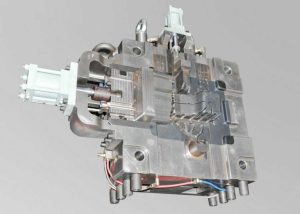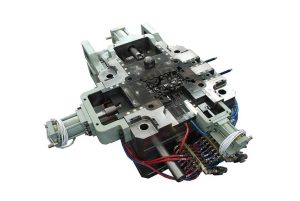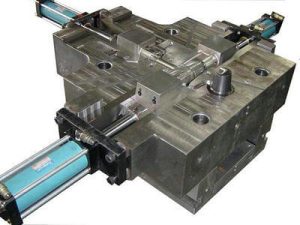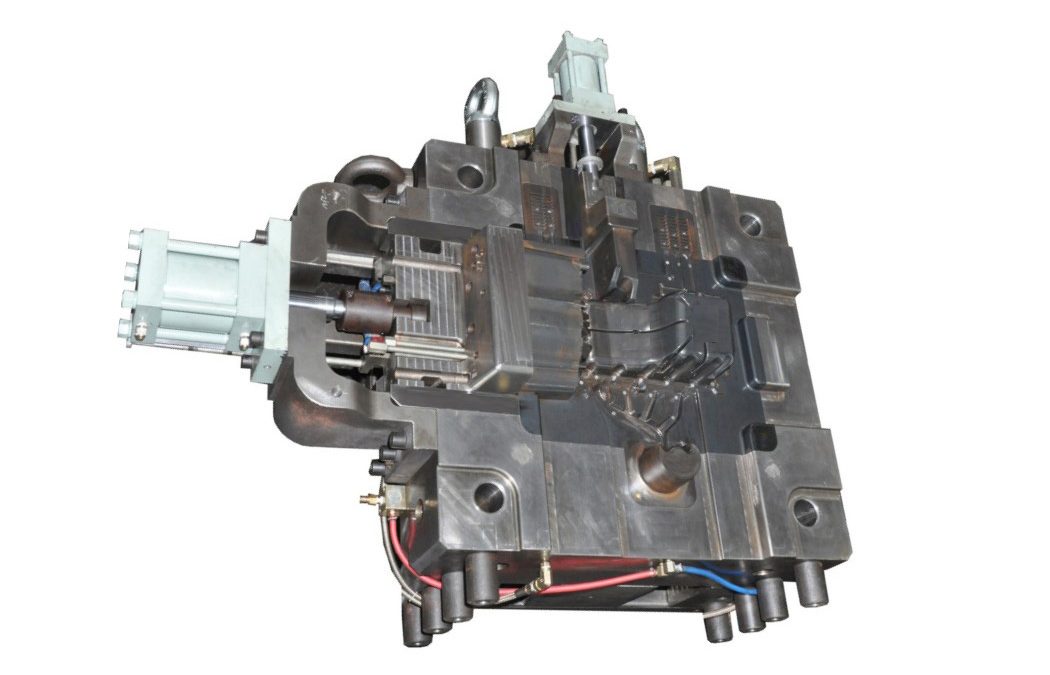The Essential Guide to Die Casting Molds: A Comprehensive Overview
Die casting mold plays a pivotal role in the manufacturing industry, enabling the efficient production of intricate and complex metal parts. These molds are instrumental in the die casting process, which involves injecting molten metal into a pre-designed mold cavity, allowing it to solidify and take the desired shape. In this comprehensive guide, we will delve into the world of die casting molds, exploring their types, components, materials, design considerations, manufacturing processes, maintenance, and the latest technological advancements.
Types of Die Casting Molds
Die casting molds can be classified into three main types: permanent molds, semi-permanent molds, and temporary molds. Permanent molds, aluminium die casting mold, typically made of steel or iron, are durable and can be used repeatedly for multiple production cycles. Semi-permanent molds, often constructed from materials like graphite or ceramic, offer a balance between durability and flexibility. Temporary molds, made from materials like sand or plaster, are suitable for short production runs or prototyping purposes.
Components of a Die Casting Mold
A die casting mold consists of several essential components that work together to shape and produce high-quality metal parts. Understanding these components is crucial for designing and manufacturing effective die casting molds. Let’s explore each component in detail:
- Mold Base: The mold base provides the foundation for the entire mold assembly. It is typically made of a sturdy material like steel and serves as a platform for mounting the other components. The mold base ensures stability, alignment, and rigidity during the casting process.
- Cavity and Core: The cavity and core are the primary components responsible for shaping the molten metal into the desired part geometry. The cavity forms the outer shape, while the core creates internal features and cavities. These components are precision machined to achieve the exact dimensions and surface finish required for the final part.
- Slides and Ejector Pins: Slides and ejector pins assist in the removal of the cast part from the mold after solidification. Slides are movable sections that create undercuts or complex features in the part design. Ejector pins, on the other hand, are used to push the part out of the mold once it has solidified. These components ensure easy and efficient part ejection while maintaining dimensional accuracy.
- Cooling System: The cooling system is an integral part of the mold and helps regulate the temperature during the casting process. It consists of channels or passages through which a cooling medium, such as water or oil, circulates. The cooling system dissipates the heat generated by the molten metal, reducing cycle times and ensuring proper solidification of the part.
- Venting System: The venting system allows the escape of air, gases, and excess molten metal during the casting process. Proper venting is crucial to prevent defects like air pockets, porosity, and trapped gases in the final part. Venting channels or vents are strategically placed in the mold to ensure effective release of air and gases.
- Other Auxiliary Components: In addition to the main components mentioned above, a die casting mold may include various auxiliary components depending on the specific requirements of the part and the casting process. These components may include sprue bushings, runners, gates, ejector plates, support pillars, and locating rings. Each of these components contributes to the overall functionality and performance of the mold.
It’s worth noting that the design and construction of these components require expertise and precision to ensure the mold’s durability, dimensional accuracy, and efficient production. Proper maintenance and periodic inspection of these components are essential to maximize the mold’s lifespan and maintain consistent part quality throughout the casting process.
Materials Used in Die Casting Molds
Die casting molds are essential tools in the manufacturing industry, and their materials play a crucial role in ensuring durability, thermal conductivity, and overall performance. Various factors, such as the type of metal being cast, production volume, and desired mold lifespan, influence the choice of materials for die casting molds. Let’s explore some of the commonly used materials:
- Tool Steels: Tool steels are a popular choice for die casting molds due to their excellent strength, toughness, and heat resistance properties. One commonly used tool steel is H13 steel, which offers exceptional resistance to thermal fatigue, high hardness, and good wear resistance. H13 steel can withstand the high temperatures and mechanical stresses encountered during the die casting process.
- Aluminum Alloys: Aluminum alloys are commonly used for low-pressure and gravity die casting molds. These alloys offer advantages such as lightweight, good thermal conductivity, and excellent dimensional stability. Aluminum molds are particularly suitable for casting aluminum and zinc alloys. They can provide rapid heat dissipation, reducing cycle times and enhancing productivity.
- Copper Alloys: Copper alloys, such as beryllium copper or chromium copper, are sometimes used for specific die casting applications. These alloys offer high thermal conductivity, good strength, and excellent resistance to wear and corrosion. Copper alloys are often preferred for molds that require excellent heat dissipation and resistance to thermal cracking.
- Cast Iron: Cast iron molds are occasionally used for certain die casting applications, especially for large and heavy parts. Cast iron molds offer good thermal conductivity and high wear resistance. They can withstand the high pressures and mechanical stresses involved in the die casting process.
- Other Materials and Coatings: In addition to the aforementioned materials, alternative options and surface coatings can be used to enhance the performance of die casting molds. For example, some molds may incorporate ceramic or graphite-based materials, which provide specific advantages in terms of thermal resistance or flexibility. Furthermore, surface treatments and coatings like nitriding, chrome plating, or ceramic coatings can be applied to improve wear resistance, reduce friction, and enhance the release properties of the mold.
The selection of the appropriate material for a die casting mold depends on various factors, including the desired mold lifespan, the type of metal being cast, the required surface finish of the part, and the anticipated production volume. Manufacturers often consult with mold designers and material experts to determine the most suitable material that meets their specific requirements.
It’s worth noting that the choice of material alone is not sufficient. Proper heat treatment, precision machining, and surface finishing techniques are equally important to ensure the mold’s dimensional accuracy, durability, and longevity. Regular maintenance practices, such as cleaning, lubrication, and inspection, also play a vital role in extending the mold’s lifespan and ensuring consistent part quality.
Design Considerations for Die Casting Molds
Designing an effective die casting mold requires careful consideration of various factors to ensure the production of high-quality parts with efficiency and precision. The following are key design considerations that play a crucial role in the success of die casting mold design:
- Parting Line and Gating System Design: The parting line is the boundary where the two halves of the mold separate. It is essential to determine the optimal parting line location to minimize parting line mismatch and facilitate smooth part ejection. The gating system design includes the sprue, runner, and gates that control the flow of molten metal into the mold cavity. Proper gating system design ensures uniform filling of the mold and minimizes defects such as porosity and air entrapment.
- Wall Thickness and Draft Angles: Designing the part with appropriate wall thickness is crucial to ensure structural integrity and avoid defects like shrinkage and warping. Consistent wall thickness throughout the part facilitates uniform cooling and minimizes the risk of uneven solidification. Incorporating draft angles on vertical surfaces of the part allows for easy ejection from the mold, reducing friction and preventing damage to the part or mold.
- Runner and Sprue Design: The runner and sprue system govern the flow of molten metal from the injection system to the mold cavity. Proper design of runners and sprues ensures balanced flow, efficient filling of the mold, and reduced turbulence. Optimized runner and sprue design contribute to consistent part quality, reduced cycle times, and enhanced overall productivity.
- Ejection System Design: The ejection system facilitates the removal of the solidified part from the mold cavity. It includes ejector pins or plates strategically placed to push or pull the part out of the mold. Careful consideration should be given to the location, size, and number of ejector pins to ensure the part is ejected without distortion or damage. Proper ejection system design helps achieve smooth and efficient part ejection, minimizing the risk of defects.
- Cooling System Design: Effective cooling is vital for maintaining dimensional accuracy, reducing cycle times, and controlling the overall quality of the part. The cooling system consists of channels or passages within the mold that allow the circulation of a cooling medium, such as water or oil. Proper placement and design of cooling channels ensure uniform cooling of the mold, preventing warpage and ensuring consistent part quality.
Optimizing these design considerations requires a balance between functionality, manufacturability, and part quality. Advanced computer-aided design (CAD) software and simulation tools can aid in analyzing and optimizing the mold design to achieve the desired outcomes.
Additionally, collaboration between mold designers, engineers, and manufacturers is crucial to considering specific requirements, material characteristics, production volumes, and cost considerations. Regular testing, prototyping, and validation of the mold design can help identify and address any potential issues before full-scale production.
By carefully addressing these design considerations, manufacturers can create die casting molds that maximize productivity, minimize defects, and ensure the production of high-quality parts in an efficient and cost-effective manner.
Die Casting Mold Making Process
The mold making process is a critical stage in the production of die casting molds. It involves transforming the mold design into a physical mold that can be used to produce high-quality metal parts. The mold making process typically includes the following steps:
- Mold Design and Engineering: The process begins with mold design and engineering, where skilled mold designers utilize computer-aided design (CAD) software to create a detailed 3D model of the mold. The design takes into account factors such as part geometry, gating system, cooling channels, and ejection mechanisms. Mold designers also use simulation software to analyze and optimize the mold design for optimal performance and efficiency.
- Material Selection: Once the mold design is finalized, the appropriate materials for constructing the mold are selected. This choice depends on factors such as the type of metal being cast, expected production volume, and desired mold lifespan. Common materials for mold making include tool steels like H13 steel, aluminum alloys, and copper alloys. The selected material is typically in the form of a block or bar stock.
- Rough Machining: The next step is rough machining, where the mold material is cut and shaped according to the mold design. Computer numerical control (CNC) machines are often used to achieve precise and accurate machining. Rough machining involves removing excess material from the mold base and creating the primary features such as the mold cavity and core. This process establishes the basic shape and structure of the mold.
- Heat Treatment: After rough machining, the mold undergoes heat treatment to enhance its mechanical properties. Heat treatment processes like quenching and tempering are performed to optimize hardness, toughness, and durability. Heat treatment ensures that the mold can withstand the high temperatures and mechanical stresses encountered during the die casting process.
- Finish Machining: Once the heat treatment is complete, the mold undergoes finish machining to achieve the final dimensions and surface finish. This involves precision machining of critical surfaces, such as the mold cavity, core, and parting line. CNC machines are used to achieve tight tolerances and smooth surface finishes. The cooling channels, gating system, ejector pins, and other features are also machined during this stage.
- Surface Finishing and Polishing: After finish machining, the mold goes through surface finishing and polishing processes to achieve the desired surface quality. This involves removing any remaining roughness or imperfections and achieving the required surface texture. Surface finishing techniques may include grinding, polishing, and texturing, depending on the specific requirements of the mold and the desired appearance of the final parts.
- Inspection and Quality Control: Throughout the mold making process, rigorous inspection and quality control procedures are followed to ensure the mold meets the desired specifications. Various measurement techniques, including coordinate measuring machines (CMM), are employed to verify dimensions and tolerances. Visual inspection and non-destructive testing methods may also be used to identify any defects or surface irregularities.
- Assembly and Fitting: Once the mold components are machined, finished, and inspected, they are assembled and fitted together to form the complete mold assembly. The mold base, cavity, core, slides, ejector pins, and cooling system components are carefully aligned and secured. The assembly process ensures proper functionality and integrity of the mold.
- Mold Testing and Validation: After the mold assembly is complete, it undergoes testing and validation to ensure its proper functionality and performance. This may involve conducting trial runs with molten metal to evaluate the mold’s filling and solidification characteristics, as well as assessing the quality of the produced parts. Any necessary adjustments or modifications are made based on the results of testing and validation.
The mold making process requires a combination of skilled craftsmanship, precision machining, and quality control measures to create a mold that meets the design specifications and can produce high-quality metal parts.
Maintenance and Repair of Die Casting Molds
Maintenance and repair of die casting molds are essential to ensure their longevity, consistent performance, and high-quality production. Proper maintenance practices and timely repairs can prevent costly downtime, minimize defects, and extend the lifespan of the molds. Here are some key considerations for maintaining and repairing die casting molds:
- Cleaning and Inspection: Regular cleaning of the molds is crucial to remove any residual metal, lubricants, or contaminants that may affect the mold’s performance. After cleaning, thorough inspection should be conducted to identify any signs of wear, damage, or deterioration. This includes checking for cracks, erosion, buildup of material, or any other issues that may affect the mold’s functionality.
- Lubrication: Proper lubrication of moving components and ejector pins is important to minimize friction and ensure smooth operation. Lubricants should be applied as recommended by the mold manufacturer or based on the specific requirements of the mold. Regular lubrication prevents excessive wear and damage to critical mold components.
- Cooling System Maintenance: The cooling system is a vital part of the mold that helps control the temperature during the casting process. It is essential to regularly inspect and clean the cooling channels to prevent clogging or reduced flow. Any buildup of scale, debris, or corrosion should be removed to maintain proper cooling efficiency. Flushing the cooling system with water or appropriate cleaning solutions can help remove contaminants effectively.
- Repair of Damaged or Worn Components: Over time, certain mold components may become damaged or worn out. These components should be repaired or replaced promptly to prevent further damage and ensure optimal mold performance. Depending on the severity of the damage, repairs may involve processes such as welding, machining, or re-machining the affected areas. It is important to work with skilled mold repair technicians who can accurately assess the damage and carry out effective repairs.
- Surface Maintenance and Restoration: The mold’s surface plays a critical role in achieving the desired part quality and finish. Regular maintenance and restoration of the mold surface help maintain its functionality and prevent defects such as sticking or rough surfaces. Surface treatments, such as polishing or coating application, can be employed to restore the mold surface to its optimal condition.
- Documentation and Record-Keeping: Keeping detailed records of maintenance activities, repairs, and any modifications made to the mold is essential. This information helps track the mold’s history, identify recurring issues, and plan future maintenance or repairs effectively. It also facilitates better communication and collaboration among the maintenance team and mold designers/engineers.
- Training and Skill Development: Training the maintenance personnel on proper mold maintenance techniques, inspection procedures, and repair practices is crucial. This ensures that the maintenance tasks are carried out effectively and in compliance with industry best practices. Staying updated with the latest advancements and techniques in mold maintenance through workshops, seminars, or industry publications is also important.
It is worth noting that preventive maintenance is key to minimizing the need for extensive repairs and reducing unplanned downtime. Regularly scheduled inspections, cleaning, and lubrication should be performed as part of a comprehensive maintenance program. Additionally, establishing a strong partnership with the mold manufacturer or a qualified mold maintenance service provider can provide valuable expertise and support in the maintenance and repair processes.
By implementing a proactive maintenance and repair approach, manufacturers can optimize the performance and lifespan of their die casting molds, ensuring consistent production quality and maximizing return on investment.
Advances and Trends in Die Casting Mold Technology
Die casting mold technology has seen significant advances in recent years, driven by the demand for improved efficiency, precision, and cost-effectiveness in the manufacturing industry. Several key advancements and trends have emerged, revolutionizing the die casting mold technology landscape. Let’s explore some of these advancements:
- Computer-Aided Design (CAD) and Simulation: CAD software has become an integral part of die casting mold design and engineering. Advanced CAD tools enable designers to create detailed 3D models, optimize mold designs, and simulate the casting process. Simulation software allows for the analysis of factors such as mold filling, solidification, and cooling, helping to identify potential defects and optimize the mold design before physical prototyping.
- Additive Manufacturing (3D Printing): Additive manufacturing, or 3D printing, has gained traction in the mold-making industry. It offers advantages such as faster prototyping, reduced lead times, and complex geometries that are difficult to achieve using traditional machining methods. 3D printing can be used to create mold components, such as inserts, cores, and cooling channels, enabling rapid iterations in mold design and customization.
- Advanced Materials and Coatings: The development of new materials and coatings has enhanced the performance and durability of die casting molds. High-performance tool steels, such as pre-hardened steels and powder metallurgy steels, offer improved wear resistance, thermal conductivity, and toughness. Surface coatings, such as diamond-like carbon (DLC) coatings and nitride coatings, provide enhanced wear resistance, reduced friction, and improved release properties.
- Innovative Cooling Technologies: Efficient cooling is crucial for optimizing cycle times and improving part quality. Advanced cooling technologies, such as conformal cooling, have emerged to enhance heat transfer and minimize thermal gradients within the mold. Conformal cooling involves the design and manufacturing of cooling channels that follow the contours of the mold, resulting in more uniform cooling and reduced cycle times.
- Sensor and Monitoring Systems: Integration of sensor and monitoring systems in die casting molds allows real-time monitoring of process parameters. Temperature sensors, pressure sensors, and flow sensors provide valuable data on mold and part conditions, enabling operators to make informed decisions and optimize process parameters. Additionally, the Internet of Things (IoT) connectivity facilitates remote monitoring and predictive maintenance, minimizing downtime and enhancing productivity.
- Automation and Robotics: Automation and robotics have been adopted to streamline the die casting process. Automated systems can handle tasks such as mold clamping, part ejection, and sprue trimming, improving process efficiency and reducing labor costs. Robotic systems can also perform quality inspections and carry out repetitive tasks with precision, enhancing overall production efficiency and consistency.
- Hybrid Manufacturing Approaches: Hybrid manufacturing approaches combine traditional machining with additive manufacturing techniques. This approach enables the creation of complex mold geometries with optimized cooling channels and precise features. Hybrid manufacturing offers flexibility, reduced lead times, and improved part quality.
- Sustainability and Eco-Friendly Solutions: The industry is increasingly focusing on sustainability and eco-friendly solutions. Efforts are being made to reduce energy consumption, optimize material usage, and minimize waste in the mold-making process. The development of eco-friendly mold materials and coatings is gaining traction, contributing to a more sustainable manufacturing ecosystem.
These advances and trends in die casting mold technology are transforming the industry, enabling manufacturers to achieve higher efficiency, precision, and sustainability in their operations. By embracing these advancements, companies can stay competitive, meet evolving market demands, and drive innovation in the die casting process.
Looking for a reliable and efficient aluminum die casting manufacturer? Look no further than CNM China die casting company! With over 18 years of experience, we specialize in die casting aluminum, magnesium die casting, and zinc die casting products, as well as machining parts, metal stamping, and plastic molds making.
Our advanced equipment and machinery ensure that we produce the highest quality and cost-effective die casting solutions. From flow meter housing and valves to lighting fixture parts, automobile parts, and decorative hardware, we can manufacture a wide range of products to meet your needs.
Our team of professional engineers and mold designers are always ready to take on new projects. Simply send us your 3D part design in STP or IGS format, and we will get back to you within 24 hours with pricing details.
Exporting various aluminum die casting, zinc die casting, and magnesium casting products, CNM Tech is the go-to manufacturer for all your die casting needs. Contact us now to experience our exceptional services and premium quality products at affordable prices!
Conclusion
Die casting molds are integral to the manufacturing industry, enabling the production of intricate metal parts with high precision and efficiency. In this comprehensive guide, we have explored the various aspects of die casting molds, including their types, components, materials, design considerations, manufacturing processes, maintenance, and technological advancements.
Understanding the different types of die casting molds, such as permanent molds, semi-permanent molds, and temporary molds, allows manufacturers to choose the most suitable option based on their production requirements. The components of a die casting mold, including the mold base, cavity and core, slides and ejector pins, cooling system, and venting system, all work together to ensure the successful creation of high-quality parts.
The materials used in die casting molds, such as tool steels like H13 steel and aluminum alloys, are carefully selected for their strength, heat resistance, and thermal conductivity properties. Surface treatments and coatings further enhance the durability and performance of the molds, while design considerations such as parting line and gating system design, wall thickness and draft angles, and cooling system design contribute to the overall quality and efficiency of the die casting process.
The mold making process involves meticulous design and engineering, utilizing advanced CAD and simulation software to optimize mold performance. Skilled mold makers then employ various techniques like CNC machining and precision tooling to fabricate the mold. Rigorous inspection and quality control ensure that the mold meets the desired specifications and maintains consistent productivity.
Regular maintenance practices, including cleaning, lubrication, and inspection, are essential to prolonging the lifespan of die casting molds. In case of damage or wear, skilled mold repair techniques are employed to restore the mold to its optimal condition, minimizing downtime and ensuring uninterrupted production.
The die casting mold industry is witnessing rapid technological advancements. CAD and simulation software enable more accurate and efficient mold designs, while additive manufacturing and 3D printing techniques revolutionize prototyping and mold production processes. Innovative surface treatments and coatings enhance mold performance, and automation and robotics streamline manufacturing operations.
In conclusion, die casting molds are indispensable tools in the manufacturing industry, enabling the production of complex metal parts with precision and efficiency. By understanding the types, components, materials, design considerations, manufacturing processes, maintenance, and advancements in mold technology, manufacturers can optimize their die casting operations, improve product quality, and stay at the forefront of innovation in the industry. Investing in high-quality die casting molds and adopting the latest technologies ensures competitiveness and success in today’s manufacturing landscape.

